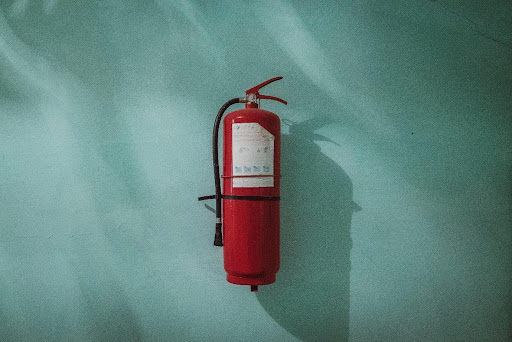Legal Fire Safety Regulations for Buildings and the Importance of Fire Protection

Fire safety is essential for every building, whether residential or commercial. In the event of a fire you have to make sure that the fire won’t spread through the entire building and the building remains structurally intact to allow everyone to safely leave the premises.
In fact, there are legal regulations which need to be met when it comes to fireproofing your building. For instance, there have to be appropriately marked fire exits, as well as up-to-standard passive and active fire systems in place. If you want to learn more about the requirements for fire safety, read on to find out the legislations for residential as well as commercial buildings.
Table of Contents
Fire Safety of Residential Buildings
The regulations for existing and newly built houses differ slightly. For buildings that are under construction the legislations state that they have to be designed with sufficient means for early fire detection, such as fire alarms as well as appropriate fire escape routes. The regulations do not specify technical requirements to follow, but they do include detailed safety measures depending on the height of the building. For instance, windows are not considered appropriate fire escapes for flats that are situated at more than 4.5 meters above ground level.
Already existing buildings that are being renovated must have appropriate measures in place to ensure the structural integrity of the building won’t cave in during a fire.
Fire Safety Regulations for Landlords
Although the regulations for fire protection have some differences when it comes to local authorities and private landlords, there are a few key points which are the same across both sectors. Firstly, each floor of the building that’s being rented must have at least one smoke alarm. It has to be tested and serviced at the start of each tenancy. Furthermore, if any of the rooms in the house have a fuel-burning appliance such as a fireplace, they should also be equipped with a carbon monoxide detector.
All corridors, staircases and flats need to be fitted with fire doors that provide sufficient compartmentation during a fire. Flats, corridors and escape rooms also have to be reinforced with adequate firestopping materials. This is done to prevent the spread of fire and smoke and allow enough time for safe evacuation.
Escape routes must be marked and kept clear at all times, all tenants must also be informed of this. Potential fire hazards such as fuse boxes, ovens or boilers must be identified and inspected regularly to make sure they’re in appropriate condition. All appliances in the property must pass an annual Portable Appliance Test and electrical goods must also have a certified safety mark.
Safety Requirements for Commercial Buildings
Fire safety in commercial buildings goes beyond just ensuring the safety of employees. It also includes visitors and even members of the public who are passing by. Business owners have to make sure that their building has passed a fire risk assessment carried out by a competent individual. This assessment includes identifying hazards, identifying people who are particularly at risk in the event of a fire, and assessing the overall risk level. Based on the produced risk assessment report, a strategy needs to be established and implemented to ensure adequate measures are taken to minimise fire hazards. The risk assessment should be revisited regularly to make sure the fire protection system is up to date.
All commercial buildings must have a fire escape plan and appropriately marked fire exits which should be kept clear of hazards. Employers are also responsible for training staff in fire safety as part of their induction as well as doing regular refresher training if any changes are made to the space that could lead to increased fire risks.
What is Passive Fire Protection?
The main goal of using passive fire protection is preserving the structural integrity of a building, safeguarding the lives of residents, employees or visitors and limiting the financial impact of damage to the building and its contents. To make this possible the building is divided in to more manageable sections (also called compartments) and fire resistant materials and structures are used to reinforce the foundation of the building. The different elements of passive fire protection can include fire doors and fire shutters, compartment walls, suspended ceilings, cavity barriers and more.
Passive fire protection is essential for limiting the spread of fire and containing it to individual compartments of the building. It also protects the building from collapsing and blocking escape routes and exits.
Why is Fire Compartmentation Important?
There are two essential functions to fire compartmentation. The first one is life safety and the second one is protecting the property’s structure.
Compartmentation is required in areas of the building which are used as escape routes, this includes internal or external fire escapes. For example, those can be escape corridors, staircases, lobbies or firefighting shafts. Fire compartmentation stops the flames and smoke from spreading, allowing occupants more time to safely evacuate out of the building. It also decreases the risk for Fire and Rescue Services.
The other equally as important function of fire partition, as we already mentioned, is limiting the spread of fire to protect the building. This is usually done predominantly in rooms with particular fire hazards such as the kitchen, to attempt to contain the spread of fire to the location it originated in. It can also bee used as a way to keep fire out of rooms that house high value items such as IT or server rooms and storage spaces. In buildings with multiple occupiers who have significantly different nature of activities, for example flats that are situated over a retail unit, compartmentation is used to ensure that in the event of a fire it won’t progress into the other occupiers’ space.
How to Identify Fire Hazards in Your Property?
Generally, you can make a list of potential fire hazards on your own by looking at the appliances in your building which could catch on fire. Those can include ovens, fuse boxes, boilers, electrical installation and others. However, there are any things which the untrained eye can easily miss.
This is why it’s always best to hire a third-party accredited specialist to survey your property and identify all the hazards for you. Additionally, an expert can also suggest a plan of action to eliminate those hazards and fireproof your property in accordance to the legal requirements.
For any important information please contact us Email GadgetsNg info@gadgetsng.com
[Button id="1"]



